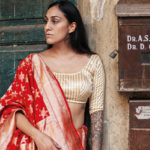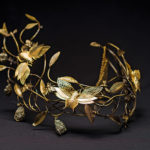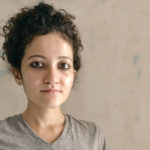For Priyanka and Prateek Raja Home Is Where The Art Is
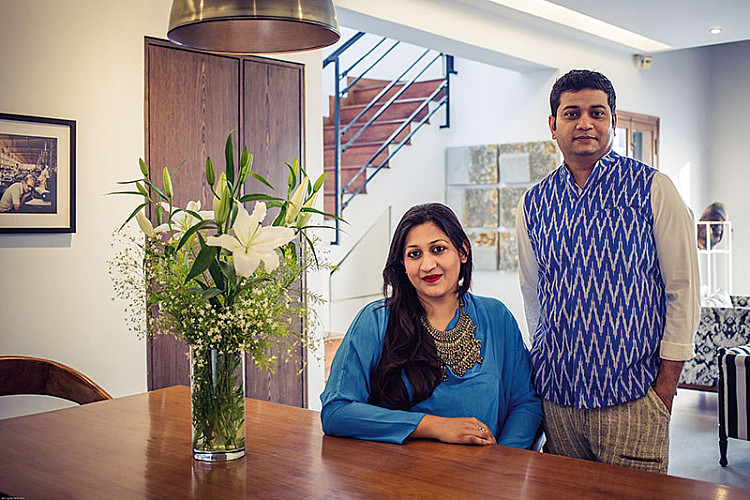
First, quintessential high-school sweethearts. Then high-flying corporate honchos with global bigwigs like the Tata group and Procter & Gamble. And, now, art entrepreneurs. Growing up together, Priyanka and Prateek Raja have almost led parallel existences all their lives. Feeding off each other, their art gallery was a natural progression in their companionship. For, ever since their early 20s, this evenly matched couple had harboured a dream — of working together. Their corporate careers were then just a stepping stone towards a greater end — fulfilling the ‘urgency’ to do something that the 30-somethings both believed in.
According to the Rajas, the co-founders and directors of the gallery, Experimenter (in 2009) came from a certain common vision that needed a degree of immersive experience that was only possible to realise when they thought about contemporary art together. When the 1930s building in the City of Joy, in which Prateek’s family’s renowned sari store is located, was reoriented, they found the setting — with its inner chambers and rear courtyard — ideal for their labour of love. The courtyard, the pièce de résistance of the structure, began to house installations, performances and talks that accompany wall- and floor-based artworks. “On a personal level, we were young with a certain risk-taking ability and had our educations to fall back on in case this did not work. Most importantly, we had hit upon an idea that was compelling, without the machinations of usual businesses and with certain privileges of creative and other forms of freedom that are rarely available in most other professions. All this, in addition to the contemporary art programme in India at the time which didn’t find an echo in the voices in my head,” says Prateek. “But the most compelling personal reason was love and a deep-seated urge to be together. It sounds a bit romantic but that was one of the primary reasons.”
Priyanka adds, “Prateek would spend hours discussing what he would be interested in showing, sometimes in the middle of the night, or in between meals, at all times that allowed his mind to think freely in fact.” Though they had initially reserved the experience of being colleagues for later, in hindsight, taking the plunge early on has been a good move. “Maybe later it would have been difficult to push ourselves to take this huge leap,” she says pragmatically.
Both grew up in Kolkata and so they have plenty of common ground, besides a deep sense of the city and the people. “The general audience here is extremely well referenced. They can cross-reference between subjects easily and come back to see exhibitions sometimes twice or thrice over. They are also very open to giving critical feedback and are honest about their apprehensions. Having said that, there is a huge lag between the kinds of exhibitions audiences see in other major art cities,” they note. Their environment, therefore, served as great nourishment for their developing sensibilities. Not to mention the demand it presented (though not the supply). Furthermore, Kolkata was the ideal place to open a gallery for their kind of mindset “which pushes the boundaries and raises questions that confront daily lives”. The scope and potential was huge and the Rajas’ keen eyes had spotted it.
In their winning combination, Prateek brought all his corporate expertise while Priyanka put in all the wisdom gleaned from years of experience as a media and brand strategist. He led the programme through research and extensive reading, while she was responsible for planning and resource management. But over time their roles merged and now they work together hand in glove in a nuanced manner. “There are, however, differences which we feel are essential to ensure that the organisation is a thinking, living structure. We respect each other’s distinct personalities,” Prateek feels. Priyanka, who enjoys an “inspirational” understanding of public relations according to her husband, is organised, composed and foresighted. Prateek is free-flowing and quick-witted. And these distinct traits help the couple take the best decisions because all kinds of apprehensions are discussed and sometimes hotly debated. The secret to their compatibility, personal and professional, clearly lies in “fitting into each other’s quality gaps” that helps them perform better.
But far from taking each other for granted, they are always eager to do a holiday or staycation with their two boys (aged four and seven). The family recently spent time deep inside the North Bengal tea gardens and forests with intermittent Internet access, perhaps so that the couple who has grown to treasure slower days — given their hectic work schedules — could switch off.
Their evidently perfect coexistence urges me to satiate my journalistic curiosity by asking the question at the tip of my tongue. How tough was it to make the switch from home to office initially? I’m rewarded with an honest answer. It’s a continuously evolving process, they say, admitting that earlier they would take issues from one realm to the other, but have now come to realise the need to compartmentalise their roles and lives in their own silos.
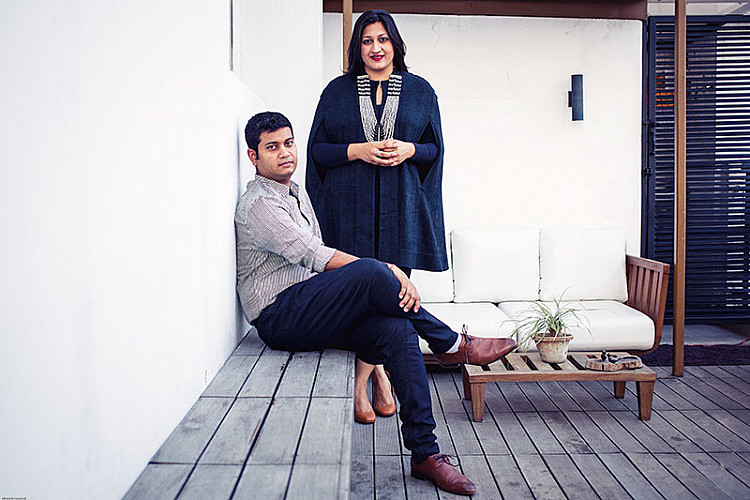
But running a global gallery that highlights alternative art from South Asian and international artists with a Subcontinental connection in their practices, instead of one that is driven by publicity or profit, is a challenging and clearly an uphill task. The first crucial years were tough — there was so much at stake, and confident and capable though they were, it was natural to get bogged down at times. “We have had to establish our position, and that took time, and rejections, which were not easy to always walk past. But in the end, our exhibitions and programming are what saw us through. We had great early supporters in terms of edgy collectors, genuine well-wishers and supportive press,” says Prateek, who admits to valuing his better half’s optimism immensely — a trait that saw them through thick and thin.
My interest shifts to their house — where I imagine a lot of their work gets done — an apartment on the 22nd floor that is reasonably high, given Kolkata has fewer high-rises than other metropolitan Indian cities. Priyanka says, “With two small kids, we cannot think of having the luxury of working only at the gallery. We work odd hours…often late into the night, and wake up early as well. We usually don’t work on Sundays and keep that time completely for ourselves and our children.” Their aesthetic preferences are quite similar too. “The one thing that is very important to us is to have an abundance of light and air and lots of open spaces. Our home has a lot of art, mostly by artists we show.
Our apartment is designed as a clutter-free, industrially inspired space that has elements of the ’50s design facets. We have used a lot of concrete and wood, and straight lines,” they reveal. Oh, and if they feel the need for privacy or some solitude, there is a small library that is a bit secluded architecturally.
Art is all about moving you, making you re-evaluate thoughts, breaking boundaries, testing socially accepted norms…and the Rajas credit it with changing them both for the better. “We meet and work with some of the most exciting minds and it makes us look at the world in ways we have not seen it before. Being in this profession has made us talk about a whole gamut of topics that would not necessarily have found their way into conversation if we were in a different profession. Art opens up dialogues. And contemporary art especially addresses issues that confront us and questions the borders we set for ourselves. We feel that the art world is one of those rare places that celebrates free expression and debate, things that are fast fading away in these times,” reflects Prateek. That they are the kind of liberal parents who encourage mature discussions is not surprising.
But they are quite old-fashioned about signing on an artist especially if it means taking no shortcuts. “We usually follow an artist’s practice for a couple of years before we sign him/her into our programme. Many would consider this a rather slow way of working but this is how we build sustainable relationships with our artists.”
And, in a way, they also view the artist-gallery relationship as a marriage. “These are real partnerships. There is at first a mutual attraction and we are already partly in love with the artist’s practice; and then, like most love stories, there is a first point of contact, a conversation, a connection between us and the artist, followed by a certain kind of mutual courtship. This interest is two-sided at every stage of the process. Eventually we go on a date or two through group exhibitions and other smaller projects and then gingerly enter into a relationship and finally a marriage.”
A flair for nurturing their artists, being grounded as individuals, reacting to everything together as a team, being prudent about how to manage finances and, finally, hard work are factors that they attribute their critical and public acclaim to. One doesn’t have to look too closely to find a common thread that binds the multidisciplinary artists who are represented by the gallery. Their practices mirror the rich new diverse responses to art, and the Rajas passionately encourage them. The recently concluded Bani Abidi show, The Man Who Clapped for 97 Hours, her second solo at Experimenter, is a point in case.
The Pakistani artist renowned for her film work and photography offered a never-seen-before treat — watercolours. As I gazed at the exhibits, I couldn’t help but marvel at them. Experimental as ever!
Related posts from Verve:
Verve Trending
Sorry. No data so far.
us on Facebook to stay updated with the latest trends


